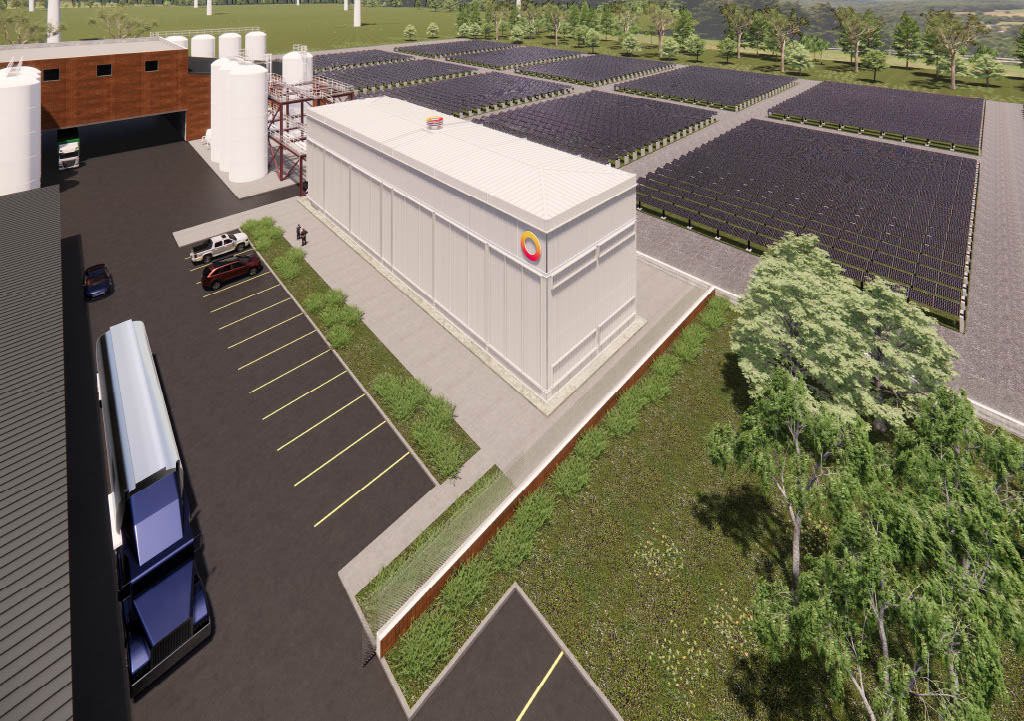From pv magazine Special Edition
Heat waves, floods, blizzards, and hurricanes more frequently threaten dangerous blackouts. Renewables paired with storage have helped to save lives, by keeping life-saving air conditioning and heat operating.
This happened when a “heat dome” punished the power grid this summer in Texas. It’s second only to California in energy storage capacity. According to S&P Global Intelligence, ERCOT has 2.2 gigawatts of storage now, and 29.2 GW in the planning pipeline by 2030.
At present, however, the short duration energy storage technologies being added to many electric grids and infrastructure across the globe have limitations—not just how long they store energy, but also safety concerns, and a shorter expected lifetime value than long duration energy storage solutions available today.
After Hurricane Fiona ravaged Puerto Rico, leaving most of the territory’s 3.2 million residents without power for nearly two weeks, solar-plus-storage systems staved off some of the worst effects. Sunrun reported that its installations provided 400,000 hours of aggregated backup power in Puerto Rico during and after Fiona. Sunnova Energy said their systems delivered 3.4 million hours of backup power in the storm’s aftermath.
This has created a powerful appetite for more energy storage: The Puerto Rico Electric Power Authority is planning to install an additional 1.5 GW of battery storage capacity, hopefully in time for the next hurricane.
Long duration energy storage (LDES) provides energy storage for more than six hours with less fire risk, more stable reservoirs of power, and ultimately at a lower cost for truly grid-scale applications. This diverse set of technologies can store power for multiple hours, days, weeks, months and even seasons—with even more benefits to diverse industries and communities.
There are many benefits to LDES, as it saves energy from wind, solar and other clean sources and makes it dispatchable, matching supply and demand any time it’s needed, not just when the weather is favorable. Storage also helps avoid curtailment of wind and solar plants when demand is low, prices go negative, or transmission hits bottlenecks.
Long duration energy storage provides load shifting services that reduce the need for fossil fueled peaker plants, cutting even more carbon and pushing the world closer to the flexible and reliable energy system that is needed to meet today’s energy demands.
The savings add up quickly and help offset the cost, which depends on the market and technology. Some of our members are in the $100 per megawatt-hour range, while others are at $75 or $50. With costs falling even faster than solar panel costs did, others project that by 2027 certain forms of long duration storage can be at $20 per MWh, even less than wind and solar power capacity.
Many long duration energy storage technologies are already commercially available today, but to keep cutting costs and scale to the level needed to reach the world’s decarbonization goals, we’ll continue to need supportive policies that accelerate the clean energy transition.
Early adopters
We anticipate the long duration energy storage market will grow to $4 trillion by 2040— these companies are making smart investments now to capitalize on this opportunity.
Rondo Energy and Siam Cement Group have partnered to scale up production of Rondo’s Heat Battery, which stores electric power as high-temperature heat in refractory brick without the use of combustibles, critical minerals, toxic chemicals, or liquids. Manufacturing capacity for 2.3 GWh per year is already online and expected to increase to 90 GWh per year. That’s larger than any current battery manufacturing facility worldwide.
Metal hydrogen battery manufacturer EnerVenue is building a 73-acre site east of Louisville, Kentucky. The first phase will offer 1 GWh of annual production capacity. The company plans to expand to 20 GWh per year across its U.S. facilities.
Form Energy broke ground on a factory in Wierton, West Virginia, that will employ 750 people to make 500 MW a year of iron-air batteries
Will your company be next?
Julia Souder is Chair of the Global Renewables Alliance and CEO of the Long Duration Energy Storage Council, a global non-profit with over 60 members in 20 countries. The Council works to accelerate decarbonization by providing member-driven, fact-based guidance and research to governments, grid operators, and major electricity users on deployment of long-duration energy storage’s mechanical, thermal, electrochemical and chemical solutions, to help achieve net zero for electric grids by 2040.
The views and opinions expressed in this article are the author’s own, and do not necessarily reflect those held by pv magazine.
This content is protected by copyright and may not be reused. If you want to cooperate with us and would like to reuse some of our content, please contact: editors@pv-magazine.com.








By submitting this form you agree to pv magazine using your data for the purposes of publishing your comment.
Your personal data will only be disclosed or otherwise transmitted to third parties for the purposes of spam filtering or if this is necessary for technical maintenance of the website. Any other transfer to third parties will not take place unless this is justified on the basis of applicable data protection regulations or if pv magazine is legally obliged to do so.
You may revoke this consent at any time with effect for the future, in which case your personal data will be deleted immediately. Otherwise, your data will be deleted if pv magazine has processed your request or the purpose of data storage is fulfilled.
Further information on data privacy can be found in our Data Protection Policy.